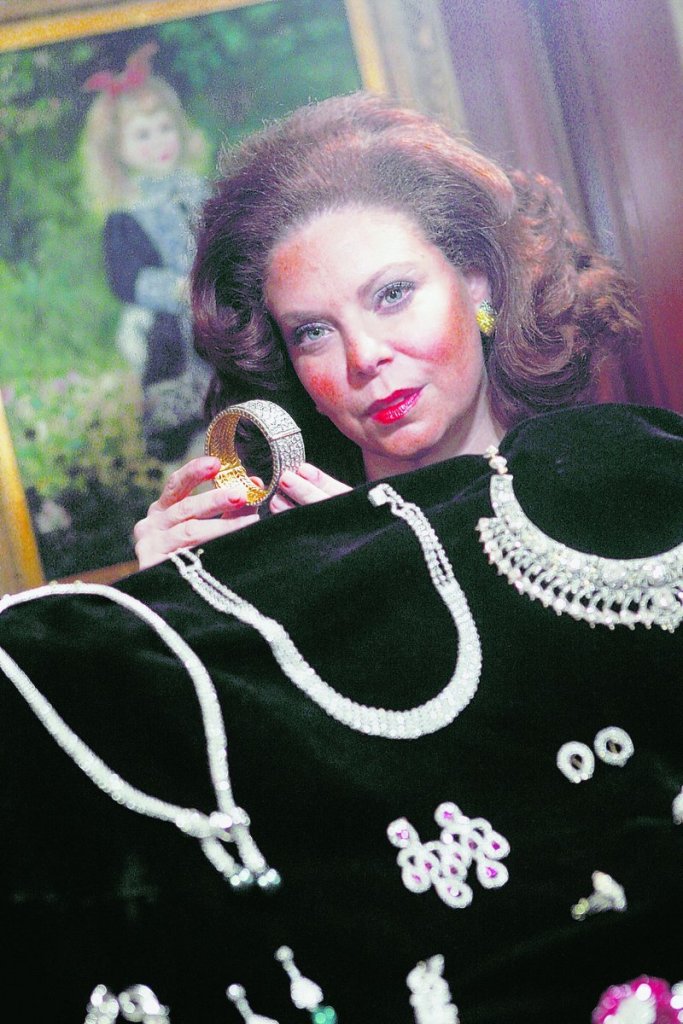CHICAGO – At House of Kahn Estate Jewelers in Chicago, Kathleen Markiewicz fingered a ruby-encrusted broach, shaped like a fish and pinned to the lapel of her shirt. She had paid $4,000 for the piece.
“I felt aquatic today,” she said, taking a sip of sparkling wine.
For Markiewicz, such purchases have become almost a monthly affair, part of efforts to move her investments away from the rise and fall of the markets and onto her fingers, neck and ears.
“I’m protecting my money,” she said.
While the Dow Jones industrial average rose above 11,000 this month for the first time since September 2008 and economists predict continued economic growth, Markiewicz is part of a growing group who have lost faith in traditional means of investing. Instead, they are putting their money into products and commodities they can see, touch, feel and even wear.
Financial experts say the trend is similar to one seen in the 1970s, when poor returns in traditional markets sparked investing in tangibles.
During the last decade stocks that make up the S&P 500 have had an annualized return of negative 1 percent, said Brian Bruce, professor and director of the EnCap Investments & LCM Group Alternative Asset Management Center at Southern Methodist University’s Cox School of Business in Dallas. In such an environment, people start looking for alternatives, particularly those they can understand.
“Anytime any particular market falls, people abandon it, which is of course always the wrong time to do it. But what an excuse to buy jewelry,” Bruce said.
In some ways, Bruce said, precious stones — which do not have tradable markets attached to them — fall into the same category as collecting coins, comic books and art. “There’s no market for them so to speak.”
In London, Adrian Ash, head of research at BullionVault — an online platform for gold bullion trading and ownership — said more people are choosing to invest in gold. “It’s much simpler to understand a lump of gold or a stone or even real estate.”
In the five years since BullionVault has launched, 17,000 clients worldwide have invested in 19 tons of gold stored in huge, underground concrete bunkers, mostly in Zurich, but also in New York and London. The uptick in gold prices has nudged the value of the bullion to $705 million
“We have people who send us $100 a month and use us like a savings account, converting their cash into gold,” Ash said. Still, some experts say investing in tangible assets is more panic than smarts.
“If you’re worried about inflation — yes, I sympathize, but there are better ways,” said John Cochrane, professor of finance at the University of Chicago Booth School of Business.
Cochrane said anyone worried about inflation should stay away from long-term bonds, but can do better investing in short-term bonds or Treasury Inflation-Protected Securities than diamonds and jewels.
Ed Grebeck, CEO of Tempus Advisers and an adjunct lecturer at New York University, said that while investing in precious jewelry and art may not be the worst investment, it can be risky as it relies on what is in fashion and comes with high commissions from auction houses and dealers on the resale market.
“Who owned it in the past? Was it somebody famous? Can you prove it? Does that really have value? Maybe today it does, many in a couple of years it won’t,” he said.
Diamonds in particular have hundreds of permutations and combinations, Grebeck said, and investing in diamonds requires having a lot of faith and trust in your diamond dealer. Because it is virtually impossible to standardize something like art or a diamond, these products are not sold and traded in the same way, he said.
“An ounce of gold is an ounce of gold. Whereas with diamonds, so much depends upon the way it’s cut,” he said.
Tobina Kahn, vice president at House of Kahn Estate Jewelers, said clients invest tens of thousands dollars — and sometimes millions — in jewelry containing diamonds and precious stones. Many of the pieces that come to the Chicago store are purchased from residents who sell their estate jewelry at House of Kahn’s headquarters in Palm Beach, Fla., she said.
“They don’t make these bracelets anymore,” she said, plucking a unique piece from her display case. “They become more and more and more rare.”
Investors like Markiewicz like that they can enjoy their investments. She says Kahn doesn’t have the same commission markups she would be charged at an auction house.
Rather than calling her broker to make an investment, she likes going to her shop and being greeted by Kahn, who already has several pieces picked out for her perusal and a bottle of sparkling wine ready to be poured.
Markiewicz has a particular affinity for creature-shaped jewels, and in her will, she plans to leave her collection to the local arts organizations she has supported throughout her lifetime, she said.
“What am I going to do? Sit around with a bunch of guys at the bar and watch the stock market?” she said. “No. I’m going to wear my jewelry to the Art Institute or the opera.”Financial experts say the trend is similar to one seen in the 1970s, when poor returns in traditional markets sparked investing in tangibles.
Copy the Story Link
Send questions/comments to the editors.



Success. Please wait for the page to reload. If the page does not reload within 5 seconds, please refresh the page.
Enter your email and password to access comments.
Hi, to comment on stories you must . This profile is in addition to your subscription and website login.
Already have a commenting profile? .
Invalid username/password.
Please check your email to confirm and complete your registration.
Only subscribers are eligible to post comments. Please subscribe or login first for digital access. Here’s why.
Use the form below to reset your password. When you've submitted your account email, we will send an email with a reset code.